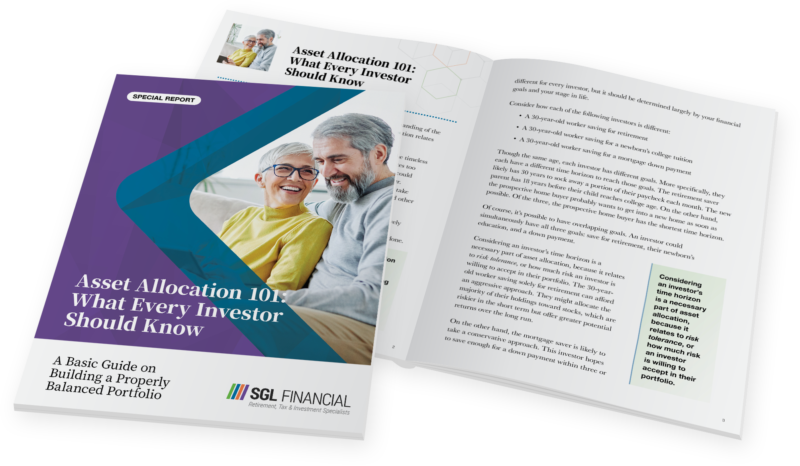Strategies for a 10-Year Financial Plan: Building a Solid Future
by Gabriel Lewit

Incorporating long-term investment strategies into your retirement plan is like planting a tree in your backyard. When you first plant the tree, it requires a lot of care and support until it has a solid foundation that can withstand the elements. With time and the right care, what was once a small sapling becomes a fifty-foot tree with a sturdy root structure.
The same can be said about your retirement assets. They start small and grow into something substantial. Along the way, the assets need the right types of care (planning and investing) to maximize their potential (rate of growth). For example, when you are just starting, you need a custom-tailored retirement plan consistent with your current circumstances, goals, and risk tolerance.
This plan lays out the foundation for your future growth. With the right plan, your assets will pursue critical mass, and you will experience financial freedom knowing you cannot outlive your assets during retirement.
As Buffalo Grove financial advisors, we believe your retirement plan should be the foundation for asset accumulation, preservation, and distribution in your estate. If you only focus on your short-term situation, you risk making investment decisions that may undermine the pursuit of your longer-term goals.
In this article, we’ll look at five goals-based planning solutions that will facilitate pursuing your long-term financial goals.
Navigating Market Volatility: The Power of Long-Term Investing
Set Clear Financial Goals
Incorporating long-term financial planning into your retirement strategy is crucial for several reasons. First, it allows you to establish clear retirement goals, such as defining your lifestyle once you retire. Then, you establish benchmarks to measure your progress.
This can include setting goals and determining when, where, and how you live your post-retirement years. Identifying specific objectives can be the fundamental guiding principle for tracking the pursuit of your short and long-term goals.
Consider hiring a CERTIFIED FINANCIAL PLANNER™ professional in Buffalo Grove, who can assist you in incorporating ten years of financial goals into your long-term financial goals for your retirement years.
Diversify Your Investments
When you allocate your investments across different asset classes, such as stocks, bonds, and real estate, you reduce the risk of your portfolio having too much money invested in one security, industry group, or asset class.
Case in point, if your assets are concentrated in just one asset class or security, a substantial portion of your investments can be impacted by one economic event. It is the equivalent of having too many eggs in one basket, and someone tips over the basket. It impacts all of the eggs in that basket.
However, by diversifying assets into several baskets, you’re spreading your risk of large losses due to concentrated positions. In an ideal world, when some of your investments falter, other investments continue to perform so they buffer each other from excessive losses.
Listen to our podcast on retirement planning obstacles.
Maximize Contributions to Retirement Accounts
Maximizing annual contributions to your tax-deferred retirement accounts can lower your taxable earned income. This tax-saving strategy reduces the portion of your income subject to taxation, resulting in potential tax savings.
For Individual Retirement Accounts (IRAs) the contribution limits are $7,000 for individuals. If you are older than 50, you can contribute an additional $1,000 as a catch-up contribution.
The 2024 contribution limit for 401(k) accounts is $23,000. The catch-up contribution amount for those over 50 is $7,500.
Suppose you have an annual salary of $80,000 and decide to contribute $10,000 to a tax-deferred retirement account, such as a 401(k). By making this contribution, your annual taxable income is reduced from $80,000 to $70,000. As a result, you only owe income tax on the adjusted amount of $70,000.
This reduction in taxable income lowers your immediate tax liability. It allows your retirement savings in an IRA or 401k to grow tax-deferred until you withdraw the funds during your retirement years. It’s a strategic move that helps individuals plan for a financially secure retirement while optimizing their current tax situation.
Minimize Your Debt
Reducing your debt before retirement is critical, especially if transitioning to a fixed income. You don’t want to rely on credit to cover unexpected expenses once you are retired.
As inflation persists and interest rates rise, any debt can increasingly impact the net dollars you have available to fund your lifestyle during your retirement years. You don’t want the added pressure of funding your lifestyle and paying down debt during retirement.
Following are some debt reduction strategies you should consider:
Create a detailed budget that accounts for all income and expenses. Identify areas where you can cut discretionary spending to allocate more income towards debt repayment.
You should also prioritize paying off smaller, higher interest-rate debts first while making minimum payments on larger ones. As each small debt is paid off, the freed-up capital can be directed toward paying down larger debts.
Another alternative is to first focus on paying off debts with the highest interest rates. This approach reduces your overall interest payments over longer periods. You can use future savings to pay down debt even faster if possible. Even small, extra payments can accelerate the reduction of debt.
If it makes sense, you can also explore refinance options, assuming interest rates for a new loan are lower than your current rates.
Another consideration to combat debt is downsizing your home or lifestyle to reduce your expenses and redirect those savings toward debt repayment.
Watch our founder, Steve Lewit, discuss how to plan for the unexpected.
Why Work with a Fiduciary Financial Advisor?
Here’s why you should consider working with a Buffalo Grove fiduciary financial advisor when developing your retirement plan:
- Fiduciary advisors are legally bound to act in your best interest. This ensures that their advice is impartial and solely focused on your financial well-being.
- Fiduciaries are required to disclose all fees and potential conflicts of interest. This transparency is vital for making informed decisions about your retirement assets.
- Fiduciaries tailor financial plans to your specific needs and goals. This personalized approach is instrumental in achieving your retirement objectives.
- Fiduciaries employ prudent risk management techniques to safeguard your investments. This disciplined approach reduces your risk of serious financial setbacks.
- Fiduciaries must adhere to strict industry regulations, providing peace of mind that your retirement assets are in the right hands.
About SGL Financial
As your financial advocate, we are focused on pursuing your needs and goals. As fiduciaries, we pride ourselves on always acting in your best interest and putting your needs first.
Our team of financial professionals works with you on an individual basis. The advice we provide is highly personalized. We don’t provide cookie-cutter financial plans or one-size-fits-all investment solutions.
If you are looking for a financial quarterback who can provide you with the day-to-day management of your wealth, consider talking with us.

